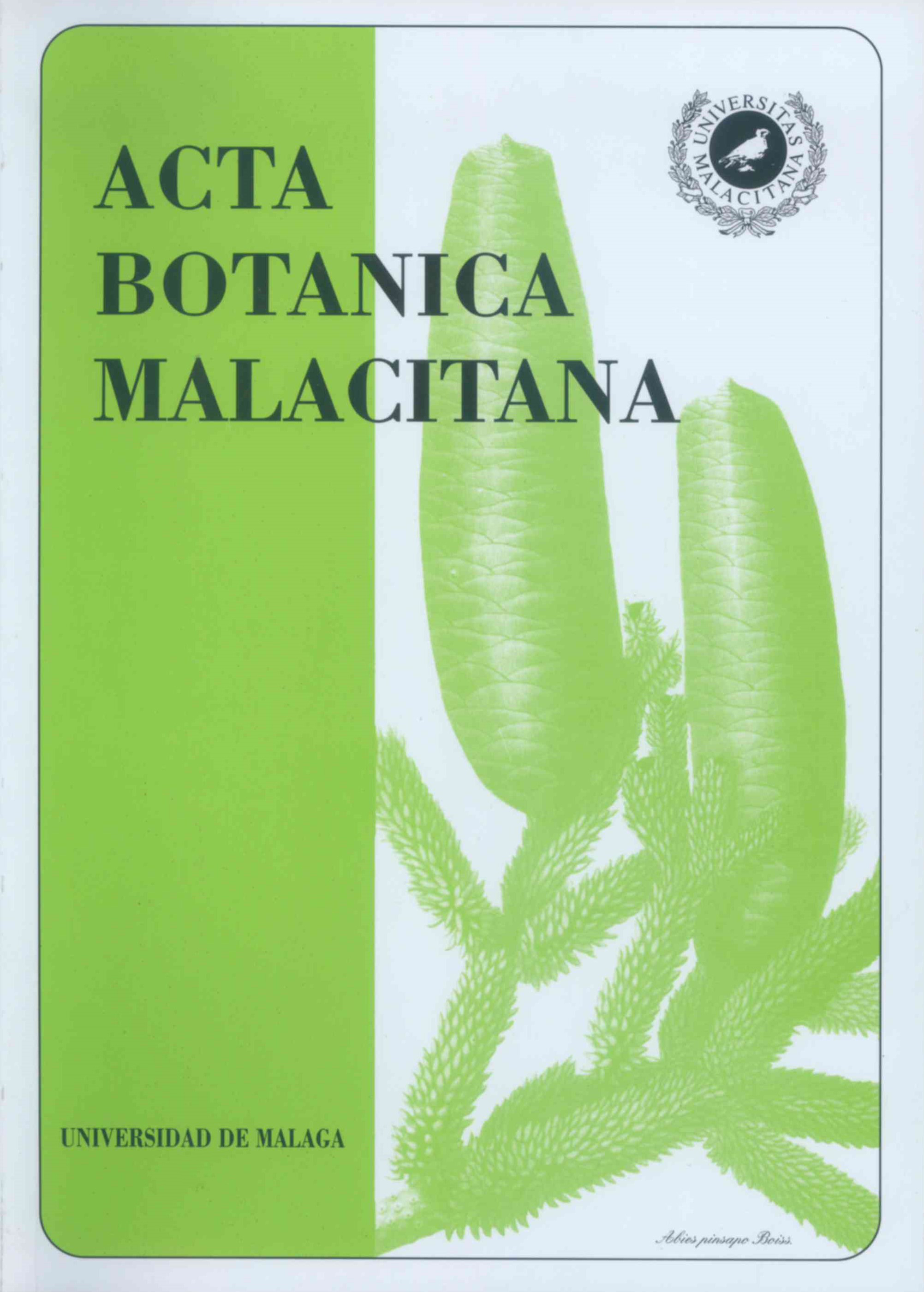Macroevolucio?n en plantas vasculares.
DOI:
https://doi.org/10.24310/abm.v28i0.7275Abstract
RESUMEN. Macroevolución en plantas vasculares. Se revisan los sistemas jerarquizados de evolución vegetal, desde una perspectiva paleoecológica y con énfasis en los controles del nivel superior para las plantas vasculares. Este nivel supone la existencia de breves episodios de intensa radiación, seguidos por largas fases de estabilización y declive taxonómico. El registro fósil sugiere que no han existido extinciones masivas entre las plantas terrestres, en el sentido en que ésta expresión se emplea para la evolución de animales, es decir, la existencia de fuertes pérdidas de biodiversidacl en períodos breves de tiempo geológico comparados con la vida media de las especies. Durante los episodios de estrés ambiental, las plantas han reaccionado haciendo valer sus capacidades de migración, recolonización, desplazamiento competitivo y, en suma, reorganizando la estructura ecológica o fitogeográfica. A un nivel taxonómico elevado, la mayoría de los grandes grupos exhiben un importante componente de supervivencia (fósiles vivientes). El único estrés al que no han podido escapar parece haber sido el de tipo abiótico y extrínseco que supone el incremento atmosférico del dióxido de carbono durante los eventos de superpluma asociados a las pulsaciones tectónicas. De entre estas, aquellas constatables para el Ordovícico Medio-Silúrico (460- 430 Ma), Devónico Medio-Carbonífero Inferior (375-350 Ma), Jurásico (150 Ma) y Cretácico Inferior (120-80 Ma), se correlacionan con fases de incremento rápido en la especiación y con la aparición de nuevos proyectos reproductores, a saber embriófitos, espermatófitos, gimnospermas actuales y angiospermas respectivamente. El artículo concluye considerando las opciones dialécticas de la radiación difusiva frente a la hipótesis adaptacionista, el papel de la preadaptación y la evolución de la complejidad.
Palabras clave. Evolución, paleobottinica, paleoecología, plantas terrestres, extinciones masivas, preadaptación, pulsaciones tectónicas.
ABSTRACT. Macroevolution in vascular plants. Here we review hierarchical, evolutionary model systems for vascular plants from a palaeoecological perspective, with emphasis in the controls for the highest tier.
This involves the existence of rapid events of radiation, followed by enduring phases of stabilization and taxonomic declining. The fossil record fails to recognize mass extinctions among terrestrial plants, at least in the sense adopted for the evolution of animals, namely, short periods of geological time involving strong losses of biodiversity if compared with average lifetimes of the extinct species. During stages of environmental stress, the vascular plants have exploted their capabilities to migration, recolonization, and competitive displacement; shortly, reorganization of the ecological and fitogeographic structure. At high taxonomic levels, most groups exhibit persistence, inertia, and survival rather than extinction, demonstrably through the existence of a number of living fossils among the main clades. The only environmental factor to which plants could not escape was extrinsic abiotic stress in the form of increasing atmospheric CO, during superplumes associated to tectonics pulsations. In fact, those dated at the Mid-Ordovician u; Silurian (460- 430 Ma), Mid-Devonian to Lower Carboniferous (375-350 Ma), Jurassic (150 Ma), and Lower Cretaceous (120-80 Ma), correlate with phases of rapid speciation within the principal reproductive groups, namely embriophytes, seed plants, gymnosperms, and angiosperms respectively. We conclude
discussing related issues of palaeoecological concern, such as diffusive versus adaptive hypotheses of radiation, the role of preadaptation in plant evolution, and the long-term patterns of complexity.-
Key words. Evolution, palaeobotany, palaeoecology, land plants, mass extinctions, preadaptation, pulsation tectonics.
Downloads
Metrics
Downloads
Published
How to Cite
Issue
Section
License
All information related to the licensing of published works in Acta Botanica Malacitana and copyright can be found in our Editorial Policy.







1.png)
